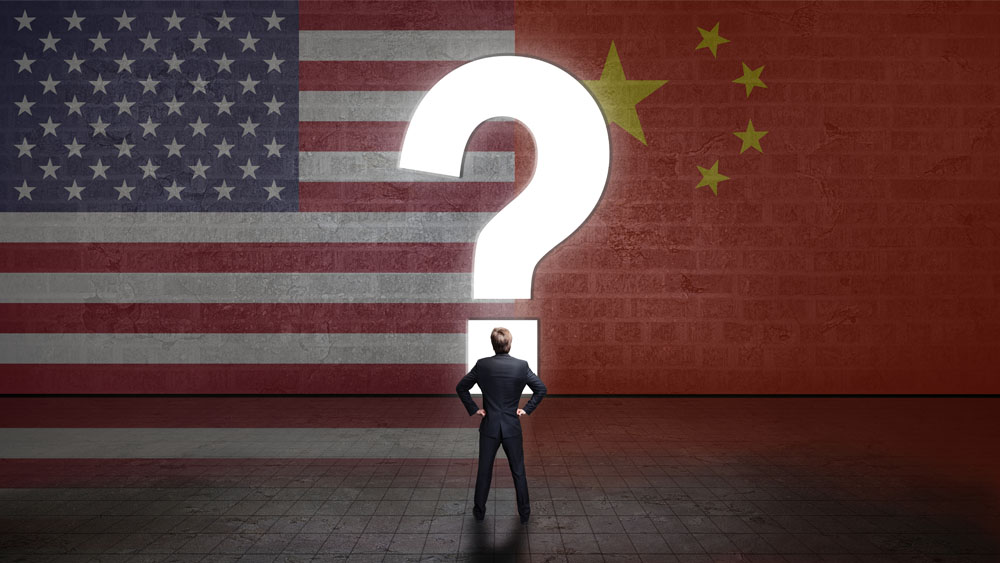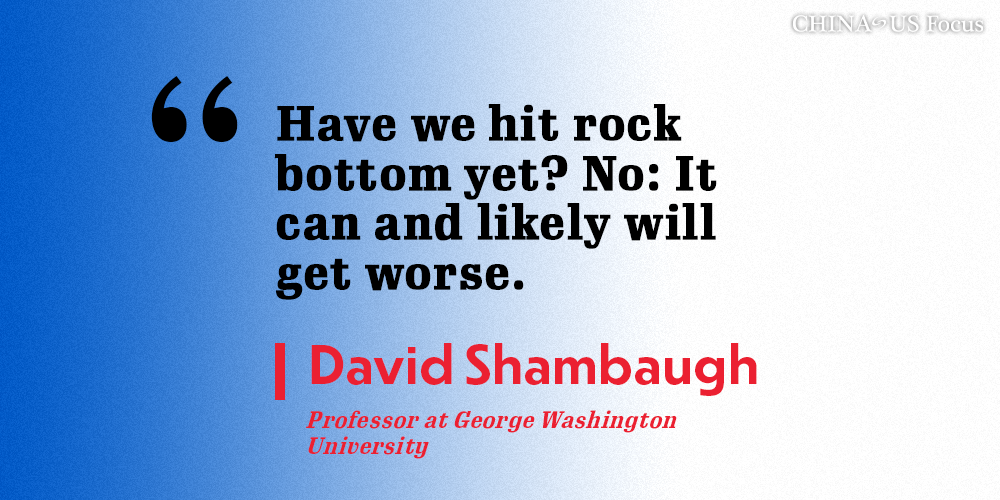
Let’s realistically admit it: The United States and China are now in Cold War 2.0. When it precisely commenced is debatable, but the tell-tale signs have been there for some time.
Both governments view the other as strategic adversaries. Both are engaged in global geostrategic competition and are maneuvering all over the world — particularly in Asia — to cultivate partners and clients and deny them to the other side. Both militaries war-game against each other, and prepare for the possibility of a direct or proxy conflict. Weapons are being procured by both militaries specifically to deter or fight the other. Both governments view the other as subverting each other’s political system. There is minimal mutual trust among senior officials on both sides, and each views the other with deep suspicion. Both governments engage in intelligence gathering in order to understand and anticipate the other’s hostile actions, while both experience espionage from the other. Both sides are building technological and commercial barriers against the other. Hyper-nationalist rhetoric increasingly pervades official discourse, with US Secretary of State Mike Pompeo and Chinese Ministry of Foreign Affairs spokespersons Zhao Lijian and Hua Chunying leading the way. News media and social media are increasingly critical of the other country, while public opinion polls show all-time highs in “unfavorable” perceptions of the other as well.

Have we hit rock bottom yet? No: It can and likely will get worse. The downward competition spiral still has a lot of momentum. While the Chinese government continues to regularly call for increasing cooperation as the only logical basis for the relationship, foreign policy practitioners both inside and outside the Trump administration do not agree. Most Americans now see a contentious adversarial relationship with China as the new normal, and many are prepared to get on with fashioning a new Cold War-like set of competitive policies vis-à-vis China. This is by no means the case with all politicians, strategists, and China experts, but is most certainly the case for a bipartisan majority. A Biden administration is likely to make little difference in this more assertive US approach to China — the tactics may be different, likely even systematically tougher, but the overall approach would likely be very similar to the Trump administration.
Chinese officialdom needs to ask itself: why didn’t we see this significant strategic shift coming in the United States? China’s America specialists and intelligence analysts really failed to predict or understand the deep changes in American thinking about China over the past decade. More deeply, Chinese officials should be pondering what the Chinese side did to “lose America”. For its part, the American side failed to appreciate the real orientation of Xi Jinping and the depth of nationalistic and anti-American sentiment in the country.
While introspection is an important step in facing the future, the question for both sides now is (to invoke Lenin): what is to be done? How can the two powers manage their new Cold War relationship so it does not result in a hot war? In other words, keeping a Cold War cold should be the principal goal.
But how to establish buffers and guardrails that can bound and contain an adversarial relationship, restrain unnecessarily provocative behavior, and construct a series of stabilizing mechanisms? I agree with Wang Jisi (my friend and colleague for 40 years since being classmates at Peking University 1983-1985), whose accompanying article suggests that new steps need to be taken to stabilize the relationship and hopefully slow the hemorrhaging. Professor Wang speaks of establishing “floors” and “bottom lines.” But I am not so much concerned about floors and bottom lines as much as I think about erecting walls and stabilizing mechanisms. To do so, lessons and instruments from Cold War 1.0 should be carefully reexamined and drawn upon where appropriate. Both sides need to adopt a conceptual framework of détente amidst an adversarial relationship.
These are two nuclear powers, which (unlike the US and USSR in Cold War 1.0) have no bilateral strategic arms control accords or “rules of the road” for managing conflict escalation. That in itself is very dangerous and should be the top priority: to engage in bilateral nuclear arms control negotiations (not three-way with Russia as the Trump administration proposes) focused on intermediate range ballistic missiles, strengthen existing and build new communications mechanisms between the two military and national security establishments, and establish very precise procedures to control escalation in the event of an accidental military encounter. Establishing limits on conventional force deployments is likely a bridge too far in the Asia-Pacific (although that was done during the Cold War with the Conventional Forces in Europe accord). Ideally, a Helsinki style framework for overall relations should be explored.
During Cold War 1.0, the United States and Soviet Union not only had their “red lines,” but also established a wide variety of conflict avoidance, confidence building, crisis management mechanisms, and cultural exchange protocols. U.S.-Soviet détente was a protracted and multilayered set of reinforcing processes. Specifically designated but unofficial “Track 2” exchanges of experts and the creation of so-called “epistemic communities” played important roles in narrowing mutual misperceptions (I recall well meeting with a group of Soviet experts on America in 1986; in addition to exchanging views and socializing, we all watched “Dr. Strangelove” together).
Unlike the Soviet-American experience, however, the United States and China have had four decades of direct exchanges of experts and students. Yet, the expert exchanges have badly atrophied in recent months and years, and need to be rebuilt. Those that do continue to meet tend to be the like-minded proponents of “engagement” and “cooperation.” Such discussions tend to create echo chambers and are not as fruitful as they could be. We need to get the “hawks” and those who advocate “competition” in the room with each other for very frank conversations (without propaganda slogans). Unfortunately, the Chinese side eschews and is unwilling to engage with such Americans (I know from personal experience).
These are just a few examples of the conceptual framework and institutionalized architecture drawn from the détente period of Cold War 1.0 that need to be dusted off and reconstructed between the United States and China, in order to buffer and regulate their escalating competition. In order to defuse tensions, some American scholars believe that a “grand bargain” needs to be struck between Washington and Beijing—as Nixon and Kissinger did with Mao and Zhou Enlai—but such overarching schemes are not suitable to the moment.
Meanwhile, both sides are erecting various defensive barriers against the other—in trade, technology, media, information, and other domains. This is both understandable and appropriate among competing and adversarial powers. This was also the case during Cold War 1.0. But these defensive measures did not simultaneously foreclose establishing channels of communication, confidence building measures, military agreements, and engaging in direct blunt talk.
It is time to accept Cold War 2.0, to get on with it, but constrain it. The conditions are by no means identical to Cold War 1.0 — China’s economy and global position are both much stronger than the Soviet Union ever was — yet there are still parallels and lessons to be carefully studied and drawn upon. A return to a framework of “cooperation” and “engagement” is a chimera; it is time for both sides to reframe the relationship to one of “managing comprehensive competition.”
